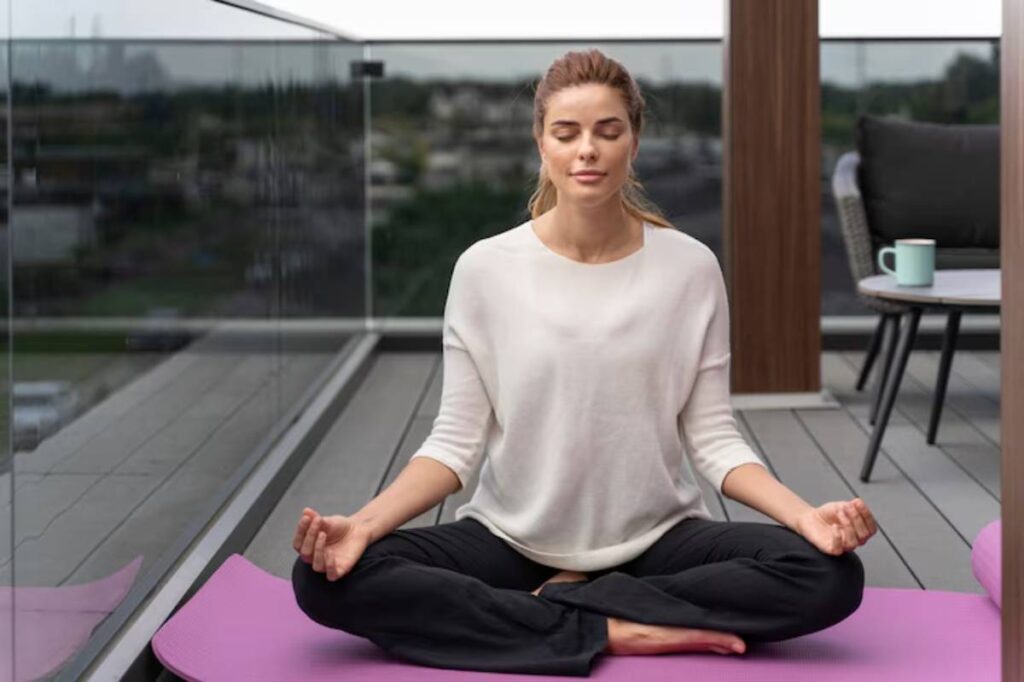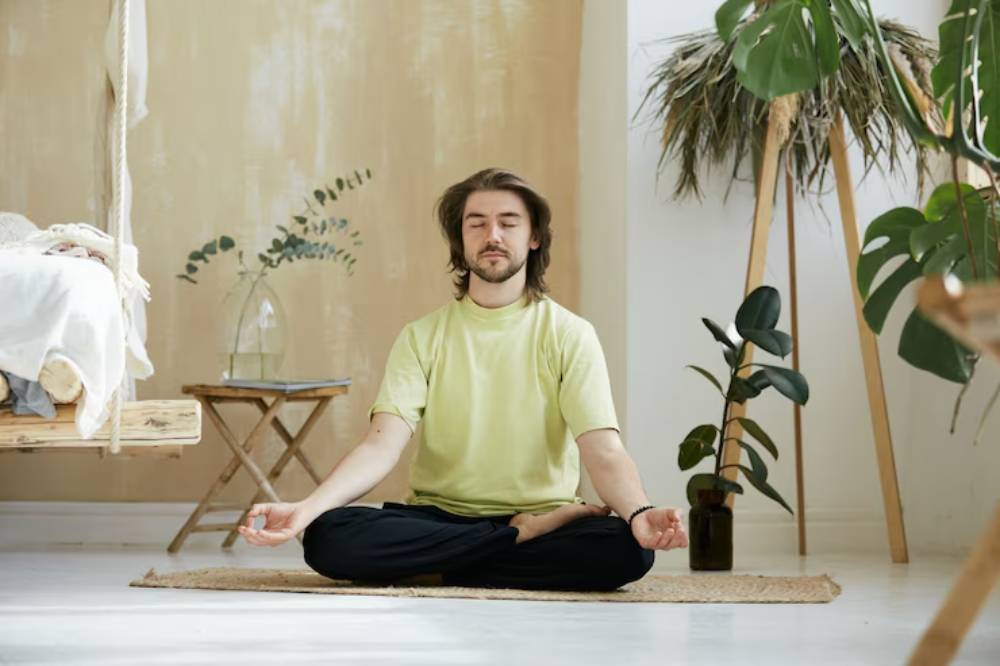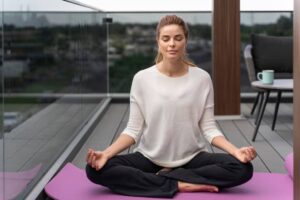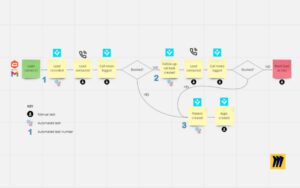The Personal Development Blog

Breathwork and Visualisation Strategies from CEOs
Many high-performing CEOs start their mornings differently, even as emails pile up and meetings fill the day. They begin with the breath. And they see the day before it begins.
These quiet practices may seem small, but they fuel big outcomes. This blog looks at breathwork and visualisation habits that successful leaders use. These techniques help them stay calm, focused, and driven by purpose. If you’re building a toolkit for mindful leadership, this is where to begin.
Why Breath and Vision Matter in Leadership
Decision-making under pressure demands composure. The most effective leaders don’t wait for calm — they create it.
Breathwork and visualisation provide quick and long-lasting benefits. These practices affect how you lead, plan, and respond.
The Benefits of Breathwork:
- Slows your heart rate
- Reduces anxiety and tension
- Sharpens attention and clarity
- Grounds you in the present
- Improves energy and focus
The Benefits of Visualisation:
- Reinforces strategic thinking
- Builds confidence before action
- Aligns daily work with long-term vision
- Primes the brain to achieve high-stakes goals
- Prepares for performance under pressure
Together, they create internal conditions that support strong external leadership.
Which CEOs Use Breathwork and Visualisation?
Many top executives across industries credit these habits with their consistent performance, resilience, and vision.
Sara Blakely – Founder, Spanx
Practises visualisation regularly. She imagines successful outcomes and future scenarios. She also thinks about how she’ll feel when she achieves her goals.
Oprah Winfrey – Media Executive
Combines breathwork and visualisation as part of her morning ritual. Uses it to anchor her mindset and align with purpose.
Ray Dalio – Founder, Bridgewater Associates
Meditates and uses breathing to sharpen decision-making. Says it helps him see clearly when emotions run high.
Marc Benioff – CEO, Salesforce
Incorporates mindful breathing and reflection before work. Credits these practices for helping him manage global pressure with calm focus.
These aren’t just wellness rituals. They’re strategic tools for clarity and composure.
Practical Breathwork for Success (3–5 Minutes)
You don’t need a yoga mat or years of training. These techniques fit into any morning, break, or pre-meeting window.
1. Box Breathing (4-4-4-4)

Used by CEOs and elite performers for calm focus.
- Inhale for 4 seconds
- Hold for 4 seconds
- Exhale for 4 seconds
- Hold for 4 seconds
- Repeat for 3–5 minutes
Best for: Settling nerves before important calls or big decisions.
2. Extended Exhale Breathing
Inhale short, exhale long — a quick shift to relaxation.
- Inhale through your nose for 4 seconds
- Exhale through your mouth for 8 seconds
- Continue for several cycles
Best for: Releasing tension and improving mental flexibility under pressure.
3. Power Breathing (Energising Focus)
Used to raise alertness quickly.
- Inhale deeply through the nose
- Exhale strongly through the mouth
- Repeat with short, controlled breaths
- Limit to 1–2 minutes to avoid dizziness
Best for: A mid-morning energy reset or fast focus before stepping into the spotlight.
Visualisation Habits That CEOs Use Daily
Visualisation is more than imagination — it’s rehearsal. The brain responds to imagined outcomes like it does to real experiences. This makes visualisation a strong strategy before performing.
1. Outcome Visualisation
See the result before the work begins.
- Sit comfortably, breathe slowly
- Imagine a successful outcome: a finished deal, a strong pitch, and a good boardroom chat.
- Imagine how it looks, sounds, and feels
- Stay with the visual for 2–5 minutes
Best for: Creating momentum and motivation in high-stakes scenarios.
2. Process Visualisation
Walk through the steps, not just the result.
- Think through a key task ahead
- Visualise yourself moving through each step smoothly and with confidence
- Picture overcoming minor setbacks with ease
- Stay present in the process
Best for: Strategic planning, public speaking, and navigating complex meetings.
3. Identity Visualisation
Align with your leadership values.
- Visualise the kind of leader you want to be
- See yourself calm, prepared, decisive, empathetic
- Anchor that version of you as your standard
- Use this image to guide your tone, words, and energy throughout the day
Best for: Leadership consistency, self-alignment, and personal branding.
How to Combine Breath and Visualisation (5-Minute Routine)

These habits are even more powerful when used together.
Try This Morning Routine:
- Sit upright, close your eyes
- Inhale deeply, exhale slowly (1 min)
- Do 2 rounds of box breathing (1 min)
- Visualise a key event or your ideal day (2–3 mins)
- Finish with one deep breath and open your eyes with purpose
Use it before work, during travel, or as a meeting reset. It works because it re-centres you in both body and mind.
Using Breath and Visualisation Throughout the Day

These tools are most effective when they’re accessible — not just aspirational.
Use Breathwork When You:
- Feel overwhelmed
- Get emotionally triggered
- Need to transition between tasks
- Want to slow down before responding
- Need energy but don’t want caffeine
Use Visualisation When You:
- Start your day
- Prepare for performance
- Plan a complex project
- Face uncertainty
- Want to reconnect with your purpose
Making It a Habit: CEO Strategies That Work
The secret to long-term impact is consistency — not duration.
Try These Approaches:
- Habit stack: Pair with brushing your teeth, stretching, or tea
- Anchor to meetings: Do 1 minute of breathwork before key calls
- Use a cue card: Keep a simple prompt on your desk (e.g. “Breathe. Visualise. Lead.”)
- Track it weekly: Log your practices like workouts or tasks
- Keep it flexible: Some days it’s 5 minutes, others it’s 30 seconds — both count
If you make it part of your rhythm, you’ll start to notice deeper focus and a calmer leadership tone.
Common Myths and Mistakes to Avoid
Breathwork and visualisation are powerful — but only when approached with simplicity and consistency.
Avoid:
- Overcomplicating it: Start small. Don’t try every method at once.
- Expecting immediate results: The benefits build subtly over time.
- Judging your thoughts: Wandering is natural — always return to the breath.
- Making it a “perfect” practice: Show up. Breathe. Visualise. That’s enough.
Why These Habits Strengthen Mindful Leadership
In fast-paced roles, staying centred is often the difference between reacting and responding. These practices don’t slow you down — they refine how you move.
They improve:
- Communication: You listen more and speak with purpose
- Decision-making: You see past emotion to strategy
- Energy management: You operate from focus, not fatigue
- Presence: You lead with calm clarity, even in chaos
These are the traits that define mindful leadership — and they begin with just a few breaths.
Lead With Breath, Build With Vision
The best CEOs don’t wait for focus or energy — they create it. They use breath to quiet the mind, and visualisation to sharpen the path forward.
By creating these visual habits and practising breathwork, you ground your leadership in clarity, not chaos.
Start small. Show up daily. Because your most valuable asset isn’t just your strategy — it’s your state of mind.
Click here to learn more about morning meditation rituals.









